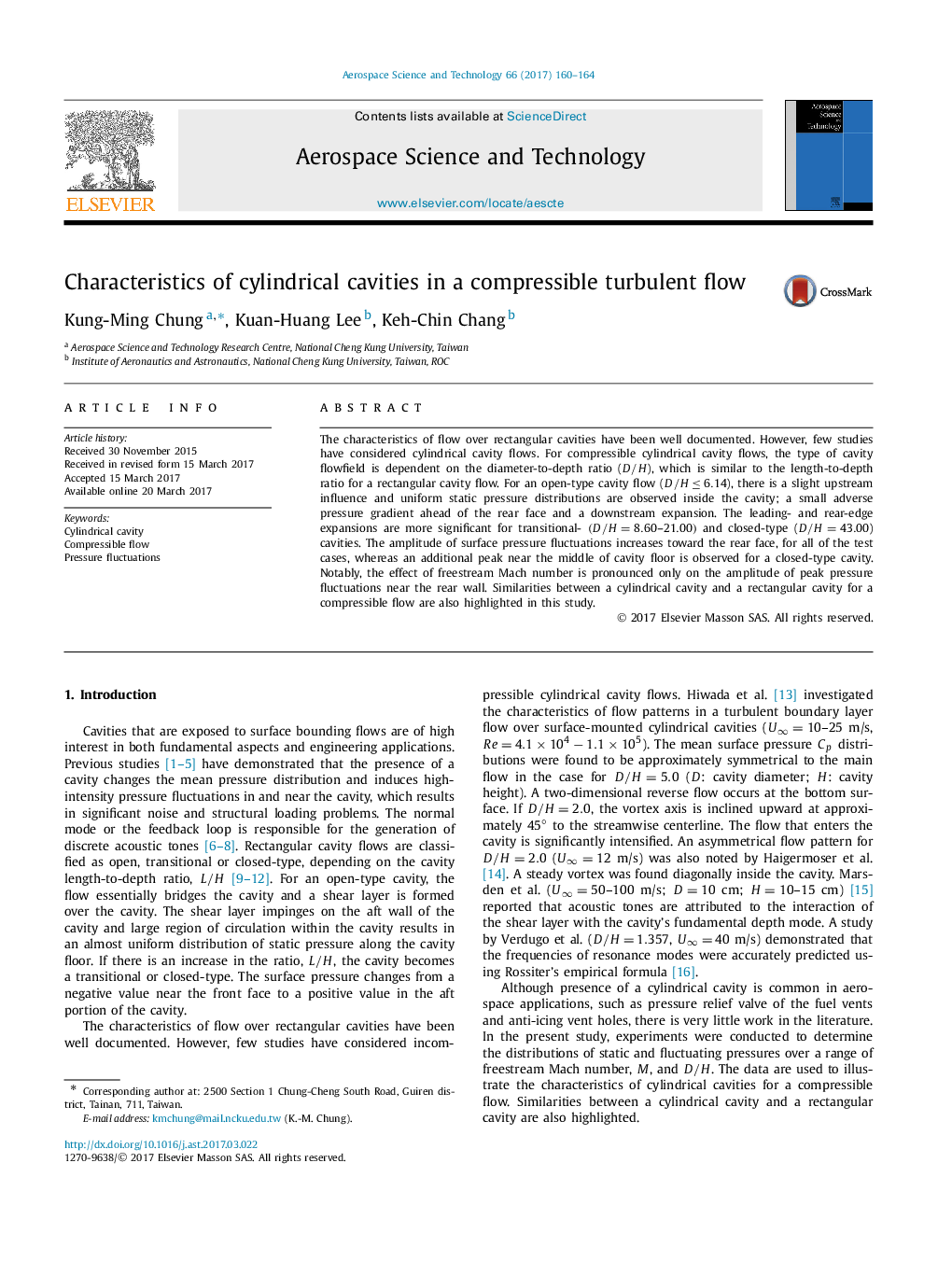| Article ID | Journal | Published Year | Pages | File Type |
|---|---|---|---|---|
| 5472865 | Aerospace Science and Technology | 2017 | 5 Pages |
Abstract
The characteristics of flow over rectangular cavities have been well documented. However, few studies have considered cylindrical cavity flows. For compressible cylindrical cavity flows, the type of cavity flowfield is dependent on the diameter-to-depth ratio (D/H), which is similar to the length-to-depth ratio for a rectangular cavity flow. For an open-type cavity flow (D/Hâ¤6.14), there is a slight upstream influence and uniform static pressure distributions are observed inside the cavity; a small adverse pressure gradient ahead of the rear face and a downstream expansion. The leading- and rear-edge expansions are more significant for transitional- (D/H=8.60-21.00) and closed-type (D/H=43.00) cavities. The amplitude of surface pressure fluctuations increases toward the rear face, for all of the test cases, whereas an additional peak near the middle of cavity floor is observed for a closed-type cavity. Notably, the effect of freestream Mach number is pronounced only on the amplitude of peak pressure fluctuations near the rear wall. Similarities between a cylindrical cavity and a rectangular cavity for a compressible flow are also highlighted in this study.
Related Topics
Physical Sciences and Engineering
Engineering
Aerospace Engineering
Authors
Kung-Ming Chung, Kuan-Huang Lee, Keh-Chin Chang,
